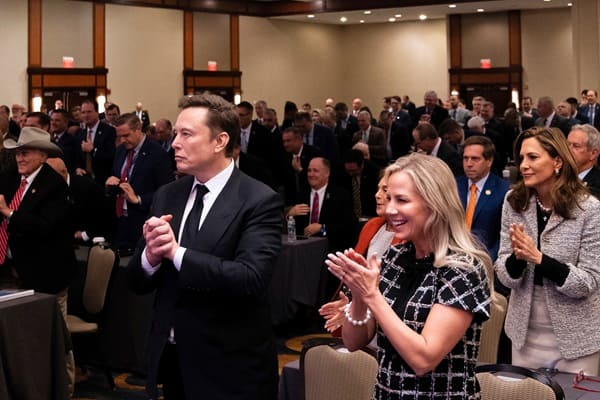A new study from media monitoring experts at CARMA and Quinnipiac University has revealed that news coverage consistently turns sharply negative when Elon Musk is mentioned.
The research found that when the focus was on the Department of Government Efficiency (DOGE), or his own ventures including Tesla, SpaceX and Starlink, Musk’s presence acted as a significant “reputational anchor,” dragging down overall sentiment.
The study, conducted with students from Quinnipiac University, analysed 158,000 online articles. Within the torrent of coverage around the Trump administration and key policy changes, the research found that a few key themes emerged.
Introducing DOGE
A key focus of the analysis explored news on DOGE; the advisory body launched via executive order by Trump and Musk on Inauguration Day. Elon Musk was previously the public face of DOGE, with his name appearing in 89% of media coverage relating to the government body. Within this, there were some clear and visible trends in sentiment.
Notably, for coverage mentioning DOGE, the sentiment was 20% more likely to be negative when Musk was also named in the same articles.
Exploring the ‘Flood the Zone’ strategy
Another element of the research examined how Trump’s administration has been ‘Flooding the Zone’; a media tactic which involves overwhelming the audience with such frequent news that they cannot keep up. This strategy is particularly effective for releasing negative news as it allows stories to last only a moment before the next headline hits.
CARMA’s report found that this Flood the Zone strategy has not always worked in the administration’s favour. The research identified several examples, including on 25 March, when DOGE saw a highly positive story – that an Obama-appointed judge had his decision to block USAID cuts overruled in the department’s favour. However, with much of the media occupied with Trump’s tariffs, this story barely made headlines, receiving 84% less coverage than the initial block by the judge.
Musk’s impact across brands
The findings demonstrated how Musk’s presence in a headline or story frequently pulls the sentiment down across multiple topics and brands. For example, coverage discussing Musk’s ventures including Tesla, SpaceX, Neuralink and Starlink demonstrated a significant correlation with DOGE news and noticeably impacted article sentiment. For example, coverage of SpaceX – Musk’s current most profitable company – followed a similar trend. Of the 2,850 articles on SpaceX, 56% (1,610) also mentioned DOGE, revealing how intertwined Musk’s personal brand is with both business and political narratives.
In terms of sentiment, positive stories around SpaceX were reduced by 22% whenever DOGE was mentioned. Meanwhile, for Starlink coverage, positive stories fell by 27% when DOGE was also referenced.
Similarly, of the 7,660 articles mentioning Tesla, 79% also referenced Musk and 45% included DOGE. Tesla stories that mentioned DOGE were found to be 17% more negative, and 30% less positive than stories about Tesla that didn’t mention DOGE. Likewise, Neuralink followed a similar pattern, with the volume of negative stories increasing by 60% whenever DOGE was also mentioned.
Alexander V. Laskin, Ph.D., Professor in the Department of Advertising and Public Relations at Quinnipiac University, commented: “The study shows how media narratives are formed and how individual figures, like Elon Musk, can disproportionately influence the tone of coverage. It is striking to see how consistently his presence pulled sentiment down, regardless of topic or platform. This offers an important lesson in the real-world impact of reputation and media dynamics.”
Sam Greenslade, Managing Director at CARMA North America and Europe, said: “This data reveals how personal and corporate reputations are often inseparable, especially when it comes to public figures like Elon Musk who dominate the narrative. His presence doesn’t just influence how stories are framed; it can significantly alter sentiment, even when the original topic isn’t about him. This sharp overlap between personality and business perception can be both a risk and an opportunity to manage.
“What’s particularly striking is how this dynamic has played out during President Trump’s initial return to office, a period already under intense media scrutiny. When high-profile individuals are driving headlines, it becomes clear just how vital real-time media and reputation intelligence can be.”








